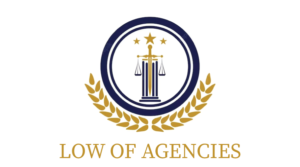Even the most resilient businesses occasionally run into insurmountable obstacles in the complex world of business and finance. Although the word “bankruptcy” frequently conjures images of failure and defeat, it can actually be a calculated action that prepares the way for a more secure future. The Go First Bankruptcy plan is one such method. In this essay, we examine the specifics of this strategy, as well as its advantages and effects on firms.
Recognizing the Go First Bankruptcy
A clever strategy known as “Go First Bankruptcy” enables a company to start bankruptcy proceedings on its terms, frequently before its creditors. This proactive strategy gives the business the ability to take charge of the procedure rather than give in to outside pressure. Using the Go First method can be a conscious decision to rebuild, reorganize, and ultimately emerge stronger, even though bankruptcy may be an indication of financial difficulties.
The Justification for the Strategy
A company takes control of its own future by using the Go First Bankruptcy strategy. The corporation can lay out its restructuring plan and present it to the court using this strategy without being unduly influenced by creditors. By starting the bankruptcy process, the business shows its stakeholders that it is determined to taking on its financial problems head-on.
Controlled Process:
By starting bankruptcy proceedings on their own terms, businesses can better manage the process and maintain narrative control. All parties involved may benefit from this control’s improved outcomes.
Creditor Negotiations:
The Go-First strategy gives the business a strong negotiating position with creditors. This leverage enables more favourable terms and raises the likelihood that the reorganization will be effective.
Employee Morale:
A Go First strategy’s proactive approach helps support keeping employees motivated. Instead of responding to rumors and uncertainty, the business shows a dedication to the security of its personnel.
Value Preservation:
Companies that respond quickly to financial difficulties frequently retain more of their value and assets, increasing their chances of escaping bankruptcy in a stronger position.
Strategic Planning:
The Go First approach presents a chance for careful planning. A thorough reorganization plan that is in line with a company’s long-term objectives and ambitions can be created.
Influence on the Business Landscape
The wider business environment may be impacted by the Go First strategy’s adoption. Creditors may need to rethink their own tactics if more businesses adopt this proactive strategy. Focus shifts from creditor-driven litigation to a more cooperative setting where participants cooperate to facilitate a faster recovery.
Conclusion
A Go First Bankruptcy plan emerges as a tactical option for companies in financial trouble in the intricate world of finance. It represents a change from the conventional bankruptcy story and demonstrates a company’s resolve to overcome obstacles and come out on top. Businesses can take charge, negotiate better conditions, and protect their assets by proactively starting bankruptcy proceedings.
The Go First method focuses on using adversity as a springboard for change rather than accepting defeat. The Go First Bankruptcy strategy shines as a light of empowerment, resiliency, and strategic vision as firms continue to traverse uncharted waters.

